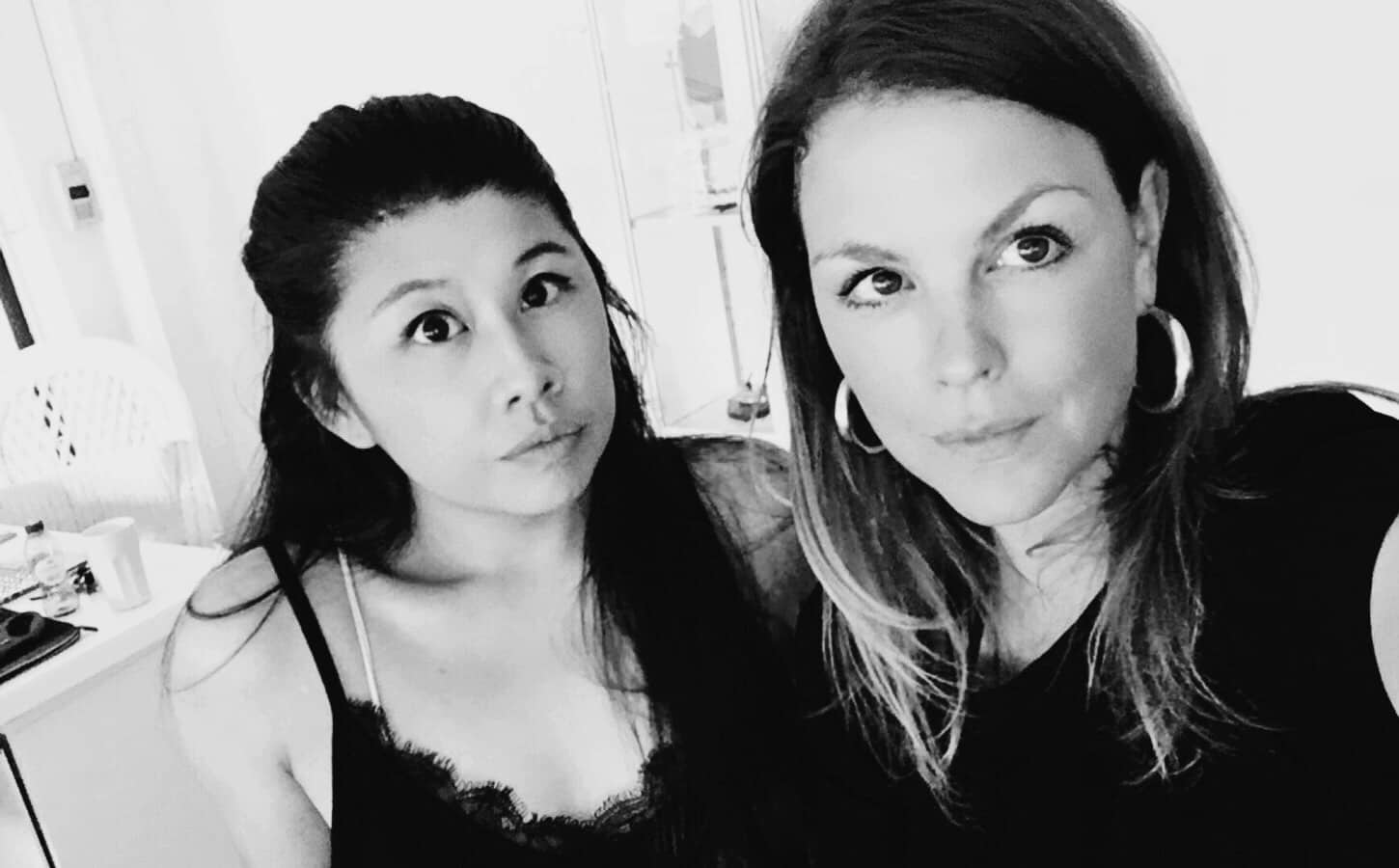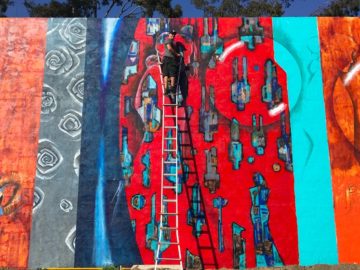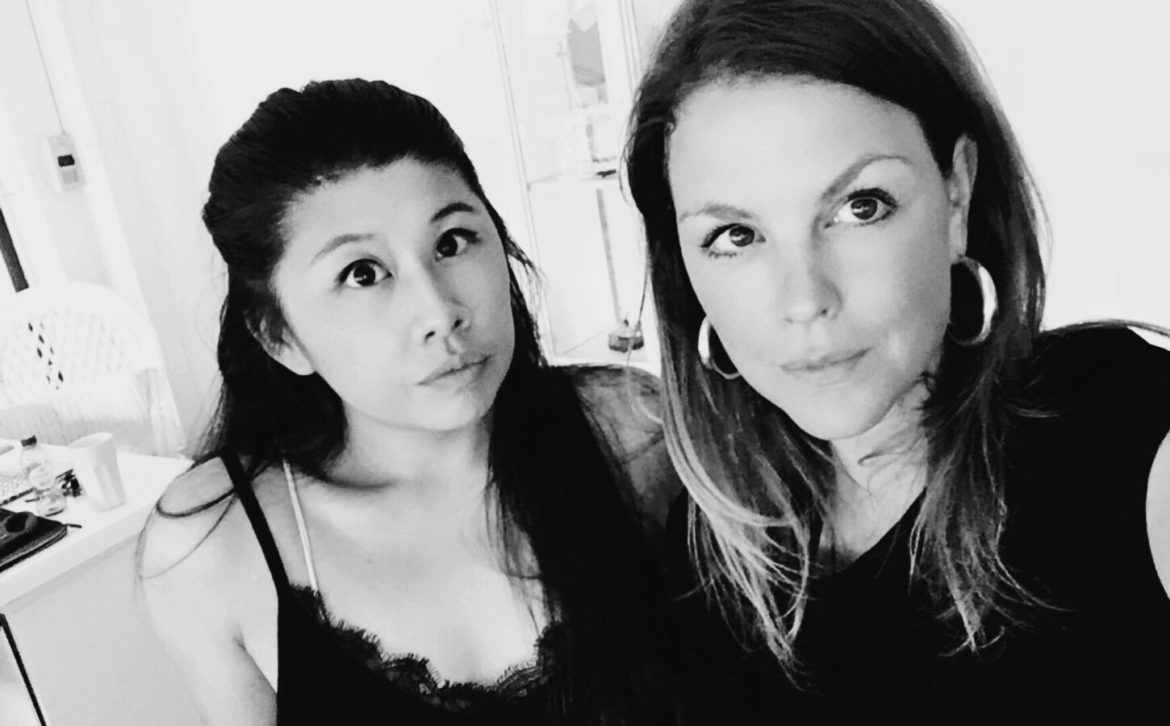
Blake Seven: Start with Six T-Shirts
BY PAKSY PLACKIS-CHENG
Michelle Pang (26) and Irene Haast (32) launched Blake Seven with six t-shirts. Four years later, their clothing can be found in 150 stores across 5 countries, including in the hip retailer, TopShop. Their brand manages to appeal across generations, from girls in their 20s to women in their 40s.
How do they compete with big brands such as Zara that can put next season’s trends in their stores in a week?
How did Blake Seven come about?
Michelle Pang: I was missing something in the market.
Irene Haast: We were looking for something that you can wear to express yourself with — nice quotes and text, but still feminine. A lot of brands use swear words, logos, or their brand names. Michelle and I were always on the same page. We had the same taste when we previously worked together.
I asked Michelle to join me because she has a lot of knowledge about fashion; she always knows the latest trends and everything on the catwalk. Even when she sees someone on the street, she can tell which brand it is. She’s also very creative.
Michelle Pang: Irene is commercial. Great with marketing, public relations, and brand building. There was something that we could combine. We have different specialities and handle different departments.
Irene Haast: That works very well. We were not even friends, which was a good thing. But now we are inseparable. She is my sister from another mister. [Laughs.]
What was the first thing you did as a team?
Michelle Pang: We were thinking about the name and the logo.
What’s with the name? Is it from the British science-fiction TV series?
Irene Haast: No, no. We didn’t even know that the science-fiction show existed! We already secured the name when we looked on Google and we saw Blake’s 7.
Michelle Pang: A lot of people ask us, “Okay, what’s the story behind the name Blake Seven?” Sorry, we don’t really have a very good story behind the name.
Irene Haast: We like the name Blake because it’s unisex. We like Blake Lively from Hollywood. Seven is our lucky number. It sounded good together.
Michelle Pang: Yeah, we asked a lot of people and they said, “It sounds international and cool.” When we started, we didn’t have any expectations. You start with, “Okay, we’re going to do this, and then we will see.” About the French bulldog: we really wanted to have an icon like the one you see with Lacoste with the crocodile or Ralph Lauren with the horse.
Irene Haast: Every good brand has a logo. When you remove the name, you still know it’s that brand.The French bulldog is just adorable and also tough. If a French bulldog walks by on the street, you have to look at it. We have the same thing with our clothes.
There are many, many, labels. What is the uniqueness of Blake Seven?
Irene Haast: You can wear it for every occasion. We have a very large target group.
A lot of brands with quotes [on clothing] are for the very young. Or they have this one target group, like rock chicks. You can wear our clothes to a party, but also to work, or if you want to relax on your coach on Sunday mornings.
Michelle Pang: Our quality is also very high. We make things with sequence and embroidery. In our photo shoots, social media, in everything we do, we make customers feel like they’re one of us.
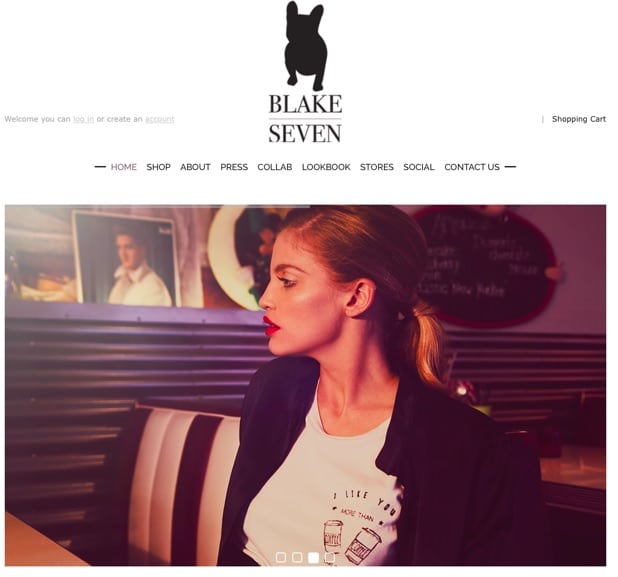
Blake Seven’s website
Irene Haast: I also think if you put like…I don’t want to say the word but…”F* me, I’m famous!” or “Girls do it better” on your t-shirt, I think more women would wear, “Girls do it better”, than “F* me, I’m famous!”. We have texts and lyrics everyone can relate to.
Michelle Pang: In our second collection, we did have a t-shirt that said,”Bad Ass”. I’m sure 80 percent of the girls who bought it were not bad asses. [Laughs.] They don’t do bad ass things, but they do want to express themselves.
I’m hearing that you are helping girls express themselves?
Irene Haast: Yeah, in a good way, with positive vibes. We like the real girls. That’s also our slogan: The ready to wear label for the real girls. Girls who are real can be themselves in this world, stand for who they are, are not fake, and follow their intuition. Yeah, stay true to yourself.
How did you manage to be in 150 shops across 5 countries?
Michelle Pang: We are at a point where we are in a lot of stores and we work with a lot of agents. We also have a financial adviser now! From now on we can’t say, “We feel like this.” [Laughs.] Or “The wind blows like this”. We have become stricter. In the first three to four years we really depended on our intuition.
Irene Haast: We always say to each other that you should start something out of love and passion, not because you want a company and earn a lot of money.
How did you get to this point?
Michelle Pang: We started with six white t-shirts with six different prints. I designed them and we produced them in Holland. We didn’t have the minimum quantities to produce elsewhere. Irene went with the samples to stores that we really liked.
They were like, “Okay girls, it looks cool. Let’s try this out.” Because buying a t-shirt does not require a big budget. We got a lot of experience from my internship and from Irene’s work. We knew how to work with margins and target prices. They ended up being really enthusiastic about it.
Irene Haast: We designed what we were missing. Surprisingly, there was a market for it.
Michelle Pang: We launched something with texts [on t-shirts] three to four years ago, which now many brands are doing, different prints but with the same mindset. It was a good time to start but it was also a difficult time to do so because it was 2012. After the six t-shirts, they asked for more. Every year, with the money that we earned from the collection, we put it into the next collections.
Irene Haast: We made a simple collection and went to the stores. I was full on PR and contacted some stylists. Then Sylvie Meis [a Dutch television personality and ex-wife of the soccer player, Rafael van der Vaart] was already wearing one of our t-shirts. Her stylist bought it in one of our stores in Amsterdam. From there, business just exploded.
We then got in contact with a Belgium agent. She saw it online and contacted us. Belgium is a good market for us. They really look at quality, then they look at price. Holland and Belgium are such different markets. In Belgium, we are a high-segment brand and you can find us between Kenzo and Marc Jacobs.
Do you look at what other big brands are doing?
Irene Haast: No, we don’t look at other brands that often because we want to focus on ourselves. The first three and a half years, we didn’t take any money out of the company. I have always had a full-time job next to the company to keep it healthy. There are moments when we thought, “What are we doing this for? We don’t even earn money with it, but should we stop or not?” These thoughts would last for a second. [Laughs.]
Every time you have to buy more stock, you have to pay upfront. Some people have family that can help them out. That is our message to the young women out there: you don’t have to have all the money if you have passion.
Brands end up with a surplus of clothing at the end of every season. Special companies are hired to shred brand new clothing. How do you manage your inventory? Have you had problems with this already?
Michelle Pang: We don’t have that issue. That is, because we take risks, but not too many risks. Sometimes, it’s better to say, “Sorry, but we don’t have any stock anymore.” TopShop wants to launch us online worldwide. We really had to put it in for October because we couldn’t manage to do it right now because of [low] stock.
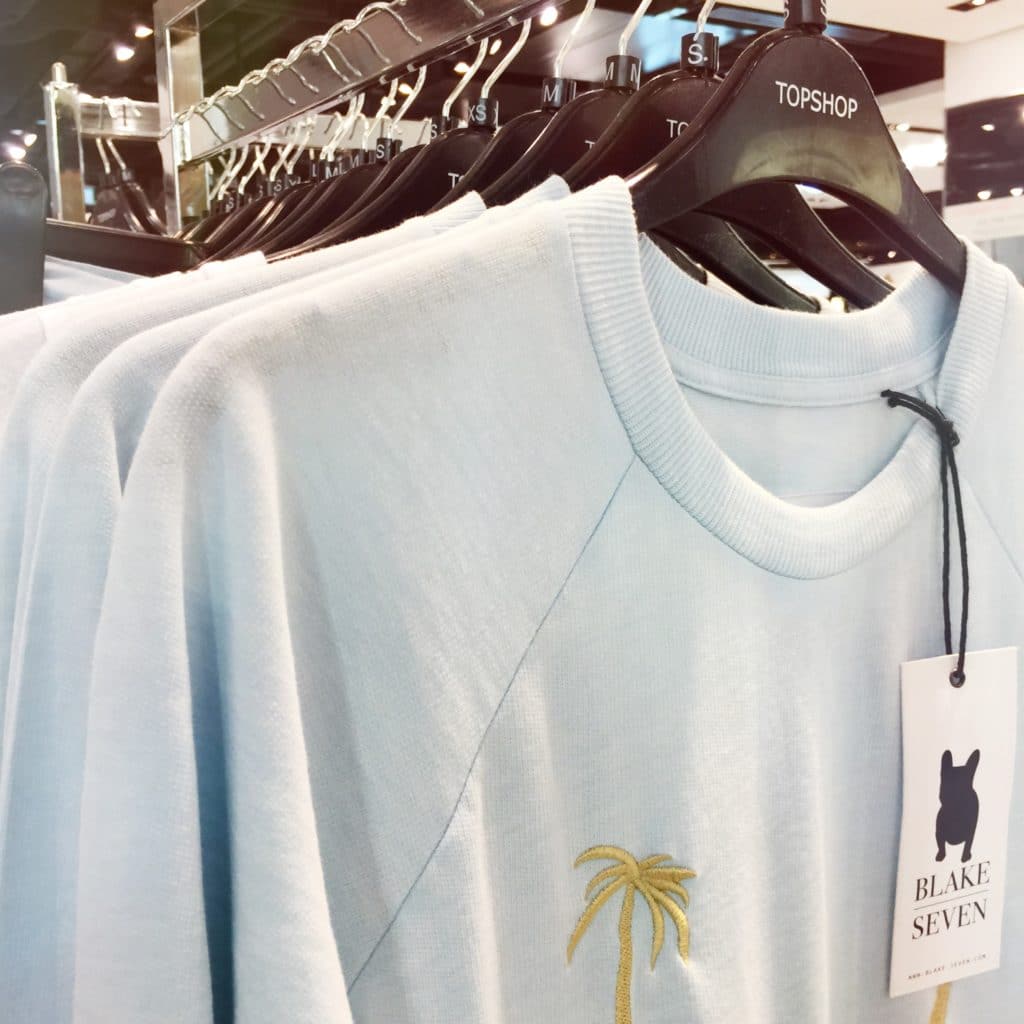
Blake Seven in Topshop
How do you scale when TopShop takes you in — now all of the sudden you have to deal with enormous quantities. How deal you with this?
Michelle Pang: We’re really, really lucky to have the people we work with in Portugal. Building a good partnership is one of the most important things for a company like ours. People we can rely on, based on trust, who also trusts us, helps us with payment completions, but also with pushing factories for reruns. We need our stock as soon as possible, but normally when you are a small brand, factories say, “You have to just wait in line.” Other brands with bigger, way bigger, amounts come first.
Our partners will do anything to help us.
Who had an impact on your professional DNA?
Michelle Pang: For me, it is my family. With a lot of people in my family, we just do our thing. It doesn’t matter what you do. If you like it, just do it. That is something that I learned from them.
Irene Haast: When I was younger, I was always reading these fashion magazines: stories about Karl Lagerfeld and Chanel. I don’t know. I like being an entrepreneur. I like brand building.
What is something surprising you’ve learned through this whole process?
Irene Haast: Stay true to yourself. Michelle Pang: Yeah, and follow your dream. Irene Haast: And make sure you have the best people around you.
What’s next for you?
Michelle Pang: Expand, expand, expand!
We attended a trade fair, which had a lot of new clients from different countries. We got a lot of interest from the Middle East, Asia, and the U.S. We are focusing on Europe at the moment, but we have super nice feedback from people from places like Abu Dhabi, which makes us say, “We need to go to Abu Dhabi!” [Laughs.] The next step is to expand to more stores.
Irene Haast: So we can make more women happy all over the world with our clothing.

